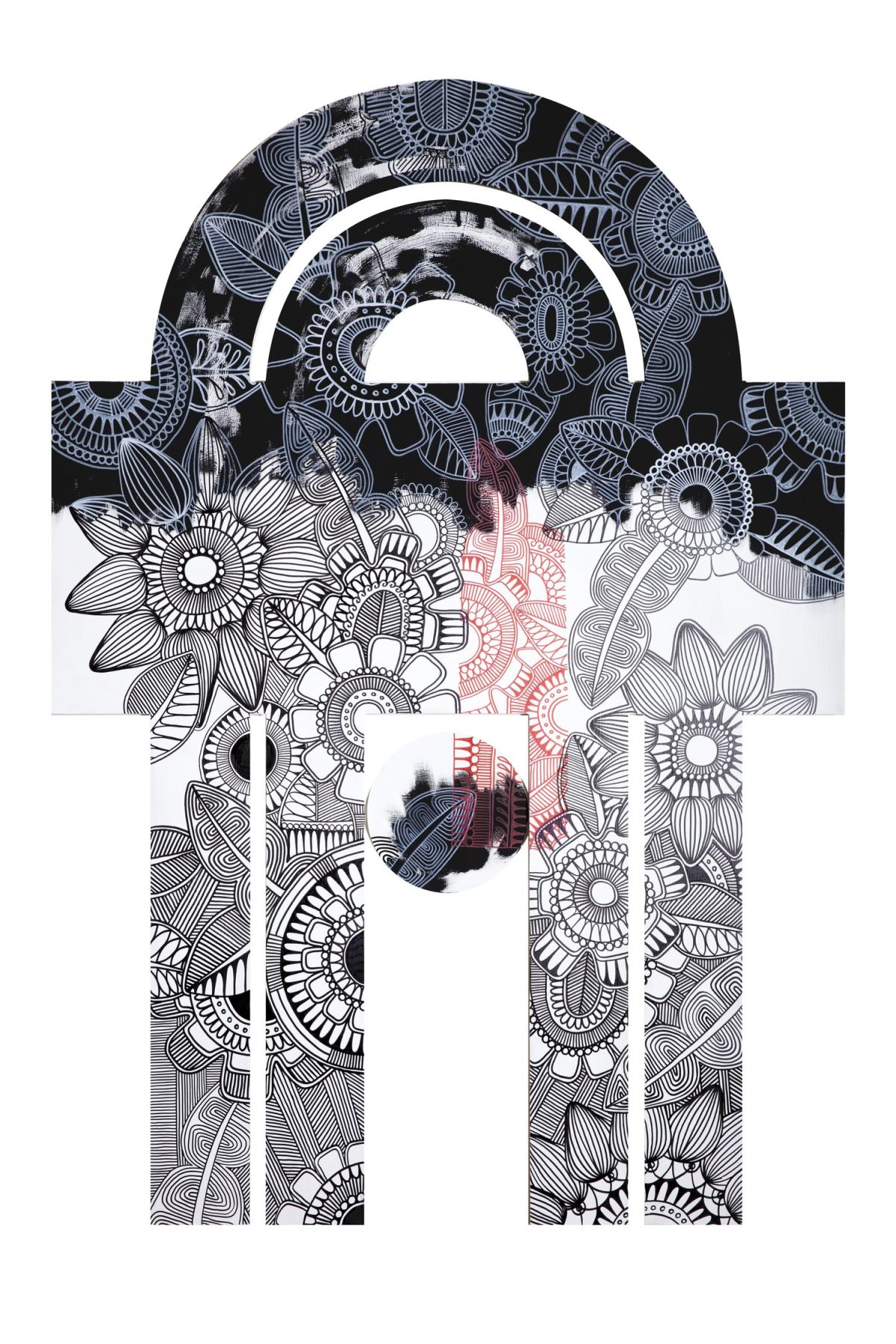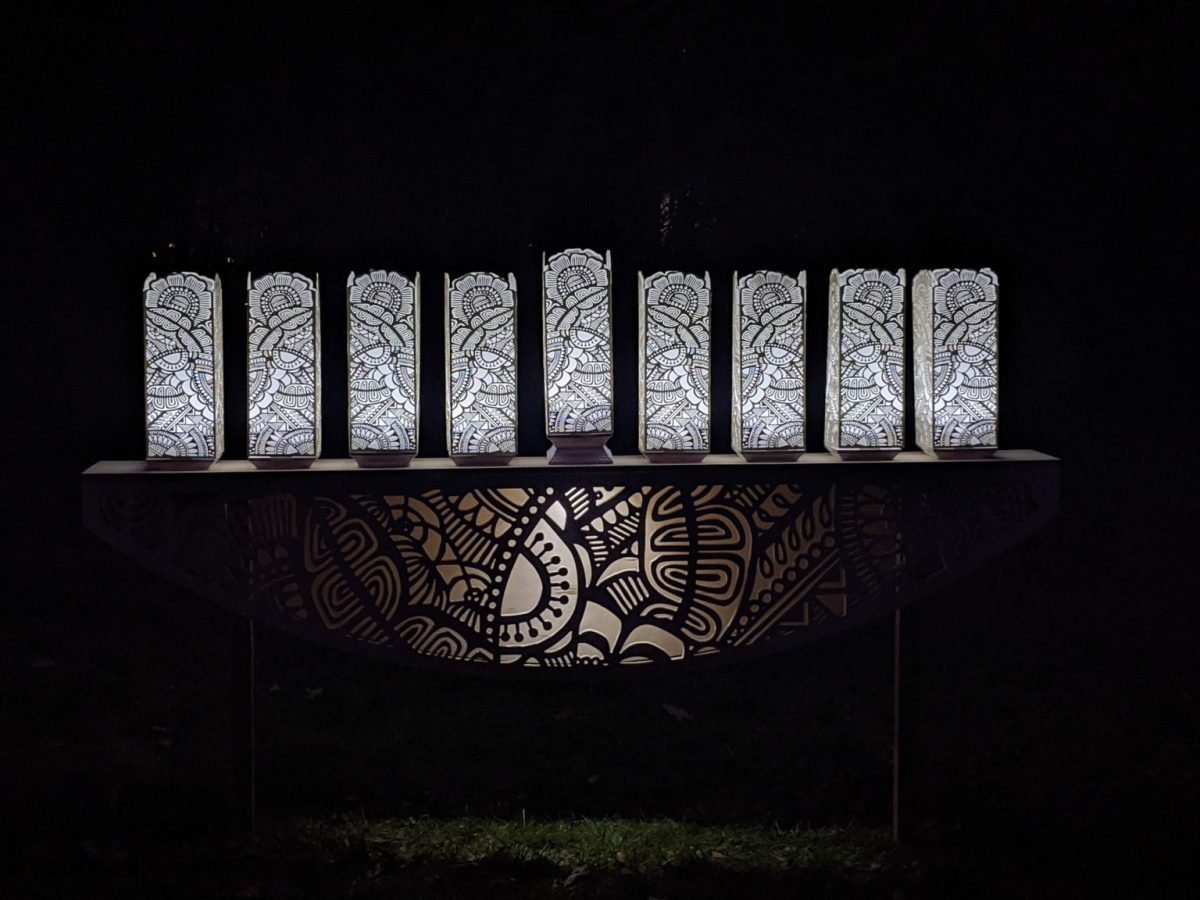
Not all stories are written with words. Some are encoded in patterns — swirling, squiggly, and zig-zagged lines that have been engraved in stone or woven into cloth for generations in nearly every culture. Olivia Guterson, also known as Midnight Olive, carries these ancient patterning traditions into contemporary art, drawing from her Russian, Ukrainian, Jewish, and African American roots to create a dazzling new ornamental language.

An intricate surface design drapes effortlessly over Guterson’s sculptures, almost as if it emerged organically. If you haven’t crafted patterns before, you might think it gets tedious to mark the same shape over and over again. Rather, she finds it healing, telling Hyperallergic, “This meditative practice feels so spiritual and ancestral — it’s almost as if it’s like the language of everyone I came from.” She treats the pattern as another form of language, pulling in symbols and memories from her multicultural family. Her Ashkenazi grandmother was a quilter and even stitched her own doilies. Guterson remembers a home filled with a glorious array of patterns, a conglomeration of porcelain tchotchkes and candlesticks. In her ink work, these memories interlock with influences from African masks, textiles, and Christmas decorations from her southern Black grandmother’s equally enormous art collection. There, the memories also include appetizing smells: “There were also the spices that we cooked with, that were dried and we ground them up. All of that informed this pattern language that felt vital for me, to be able to be all of who I am.”

“There were just so many patterns,” she continued. “Being around them all the time is just really comfortable.” Paying homage to her grandmother’s textile work, “Grandmother’s Last Quilt” (2020) proudly displays bold, maze-like geometries that dance together over folded fabric. Works like “From There to Here and Back” (2019) weave together bright red and black lines in layers of flora across the canvas. Her compositions delicately play between rigid repetition and a free-flowing garden of wayward, pen-inked vines.
In Jewish tradition, hiddur mitzvah is the principle of making ritual objects as beautiful as possible, which has been brought out in many settings of Jewish history through dense ornamental decoration. This practice of sacred adornment can extend to everyday objects. Guterson recently collaborated with artist Laura Earle to design a wooden comb titled “Ha Aron Imotaynu (The Ark of Our Mothers).” She decorated the piece with her signature patterns surrounding a Hamsa hand, writing in an Instagram post that “the comb is a tangible affirmation and wearable extension of self.” From the Orthodox hair coverings used on one side of her family to the Afro picks and combs on the other, hair is both an ordinary part of everyday life and an extraordinary mode of self-expression. Whether it’s a daily routine of applying lotion or choosing how we decorate ourselves, Guterson thinks that our bodies are things we “curate.”
“I think for most of us, whether we know what we’re doing or not, there’s so much reason behind the necklaces we wear or the rings that we wear. That ritual is an important part of how we make way for the day,” she said.

Her ornament is also influenced by her location — the city of Detroit. “There’s a rhythm in the ground here that informs so much of what I do. I think even the way my lines are spaced is different here than they are when I’ve painted other places.” She found herself drawn to the city by its deep Black history, in addition to its legacy of Jewish community and solidarity. While relations have not always been peaceful between the two groups, the close proximity between Jewish and Black neighborhoods led to collaborations in the fight for civil rights that continue to this day.

Guterson’s publicly engaged work ranges from gallery murals created with the community, to a Seder table woven out of plastic bags gathered from her neighborhood and public art where her floral patterns bring city walls to life.
What’s next for Guterson? She’s looking forward to checking out a big stack of books from the library as soon as she matriculates as an MFA student at Cranbrook Academy of the Arts this fall. One of her interests is the memories of Detroit’s Jewry. Once a dense population in the city, many have moved out to the suburbs or to other cities. “There were so many synagogues. We’re now down to just one within the city limits.” Her inquiries trace the stories of generations passed, whether it was daily life (“What hospitals did people go to? I want to know where the delis were!”) or how Jews gathered to pray in the motor city.
Recent years have changed those gatherings, both in Detroit and beyond. Some shuls have been brought into the digital sphere by the pandemic. Others have increased their security for their buildings in an era of rising hate crimes. Guterson hinted at a future project of creating adorned incantation bowls to leave outside temple doors as protection, another traditional craft from Jewish magic.

When I asked about the projects she’s most excited about, she immediately beamed: “Well, I gave birth during the pandemic. So I have a child that will be almost two in August.” Nalo, who is regularly featured on her Instagram page, now joins her in daily work in the studio as a close creative collaborator. She’s fascinated by her child’s art-making, which she describes as a “Carefree, non-cerebral way of just dipping in.”
Through so many eras of migration and oppression, the myriad of ways that Black and Jewish communities create art has evolved. Guterson’s work reaches back to gather spices, magic, and ancestral patterns, bringing them along with her child into the future.
0 Commentaires